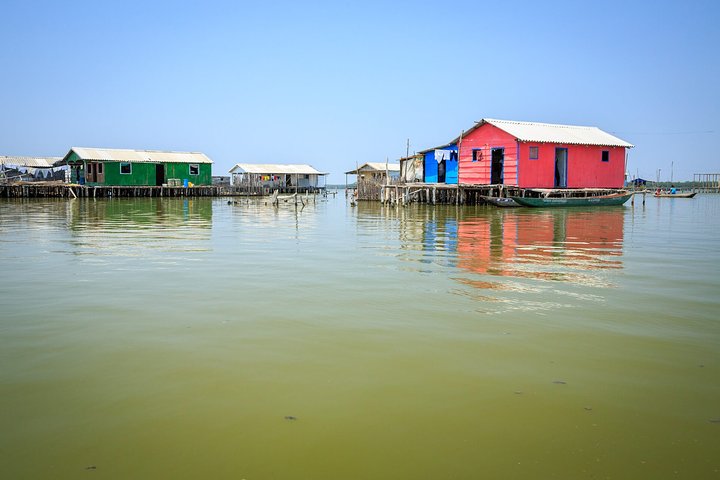Aves exóticas, manglares, especialmente en la extinción y muchas otras sorpresas lo esperan en esta excursión a la Gran Ciénaga de Santa Marta. ¡Necesario!
Precio
El precio de esta actividad es de 76,70 €.
*Precio puede variar según disponibilidad y fecha.
Idioma del Guía y Tiempo de la Actividad
Español
Excursión a la ciénaga grande de santa marta
magic tour colombia – lost city
After an explanation about the tour we were going to do, we got on a boat with motor and tent that, complying with biosafety protocols, allows two people per bench. In my case, there were 10 of us, including the driver and guide, in a boat suitable for at least 16 people.
At 8:00 a.m. we were already navigating the waters of the Ciénaga Grande. This ecosystem occupies more or less an area of 725 square kilometers. It is made up of mangroves, lagoons, rivers and swampy areas that do not exceed two meters deep.
And that’s not all. The mangroves make the tour something extraordinary. The combination of the vivid green of the bushes with the blue of the sky and water, looks perfect with the white herons that perch on the branches.
The fishermen also use sticks to delimit the space where they have their traps, so that the others know that they cannot approach and with that, at the same time, they divide themselves by sectors: some boats are in charge of crabs, others of shrimps and fish.
primer informe de gps sobre la ciénaga grande de santa
La Ciénaga Grande de Magdalena (o Santa Marta) está situada en el norte de Colombia, en el departamento de Magdalena. Es una reserva natural de 26 hectáreas, de lagos, ciénagas, lagunas y manglares. Es un refugio para las aves migratorias que vienen de Norteamérica.
Los ecosistemas de manglares favorecen las distintas fases del ciclo vital de moluscos, crustáceos y peces. Estos manglares también contribuyen a la conservación y supervivencia de especies endémicas: Caimanes, monos, manatíes, iguanas, nutrias, garzas pardas, patos aguja, pelícanos, pájaros serpiente, garzas azules…
Situado a 2 horas en barco, 3 pueblos (Trojas de Cataca, Buenavista y Nueva Venecia) reinan sobre esta reserva natural. Unas 300 familias de pescadores viven en casas de madera sobre pilotes de todos los colores. Este pueblo auténtico y muy acogedor vive principalmente de la pesca. Lejos de todo, parece olvidado por el mundo…
Tuvimos la suerte de descubrir esta naturaleza y este pueblo de forma muy confidencial. De hecho, éramos los únicos turistas en los manglares e incluso éramos una curiosidad para los habitantes de Nueva Venecia. ¡Pillamos a gente en las ventanas haciéndonos fotos!
the santa marta swamp in colombia, a haven of peace.
Along the journey, we will reach one of the palafita communities of the swamp where we will learn about the lifestyle of its people and how they build their canoes and how they use the fishing lines to catch fish. Afterwards, we will meet an artisan from Nueva Venecia who will show us how they build their houses in a completely handmade way.
If you are looking for a complete cultural immersion, we recommend you to choose this option with which, after the stop in Nueva Venecia to meet a local carpenter, we will continue the tour aboard a traditional canoe with which we will reach a new village. There, we will participate in an artisan bread workshop, where you will learn how to make bread in the traditional style!
ciénaga grande de santa marta. – new venice
«It is a wetland included in the RAMSAR list and known by the local people as «The Valley of the Hundred Waters». The sanctuary is located in the ecoregion of the Ciénaga Grande de Santa Marta, declared a UNESCO Biosphere Reserve. It is the largest and most important coastal lagoon in Colombia and also one of the main sources of fishing resources on Colombia’s northern coast. It is considered a strategic place of vital importance for the planet. Fishing communities derive their livelihood from the Ciénaga Grande and live in picturesque stilt villages.
